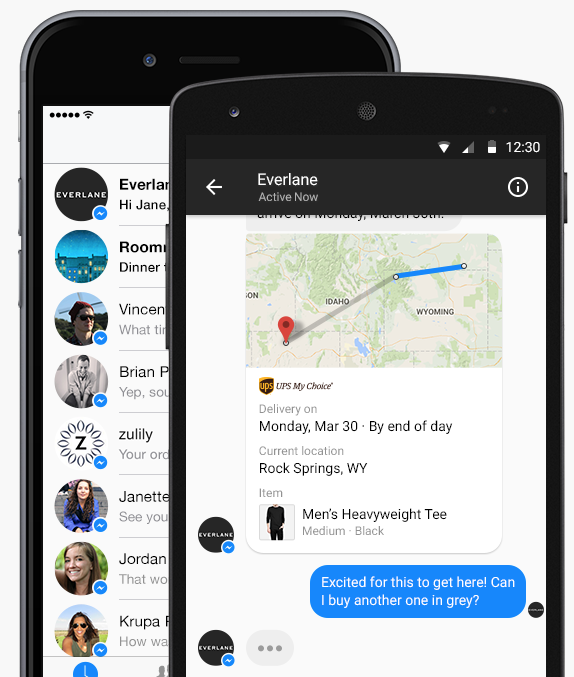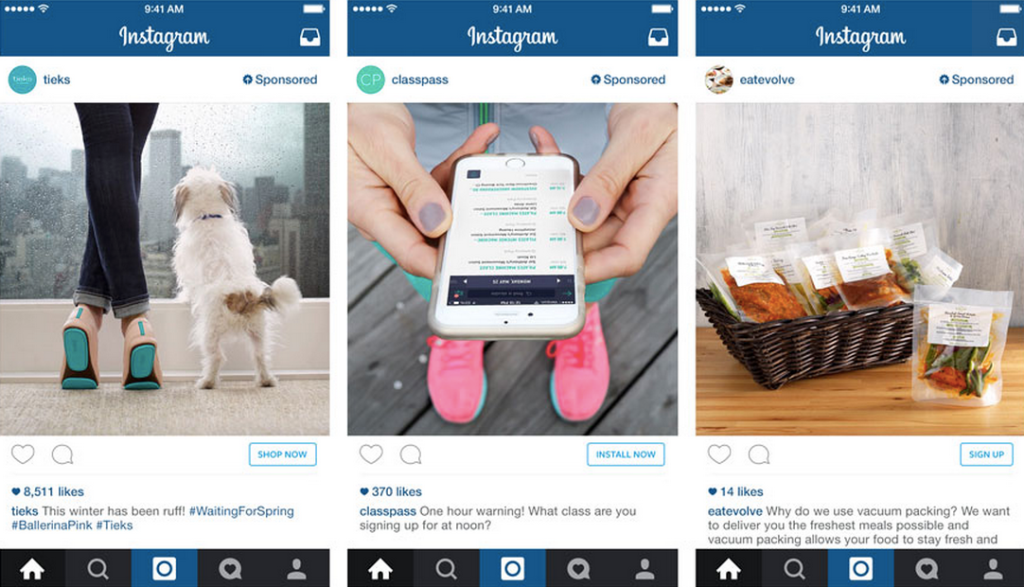Maybe you’ve realized it, maybe you haven’t. What was once a world of diversity and originality has slowly started to look like a bad case of déjà vu. I’m referring to the copy-cat culture that social platforms have created. They are rapidly becoming more similar to each other as each day passes.
In a world of uniformity, how can your brand stand out and remain inventive? Well to fully understand that, we first have to identify how the platforms are changing to meet consumer’s needs and the driving forces behind the change.
Where It All Began
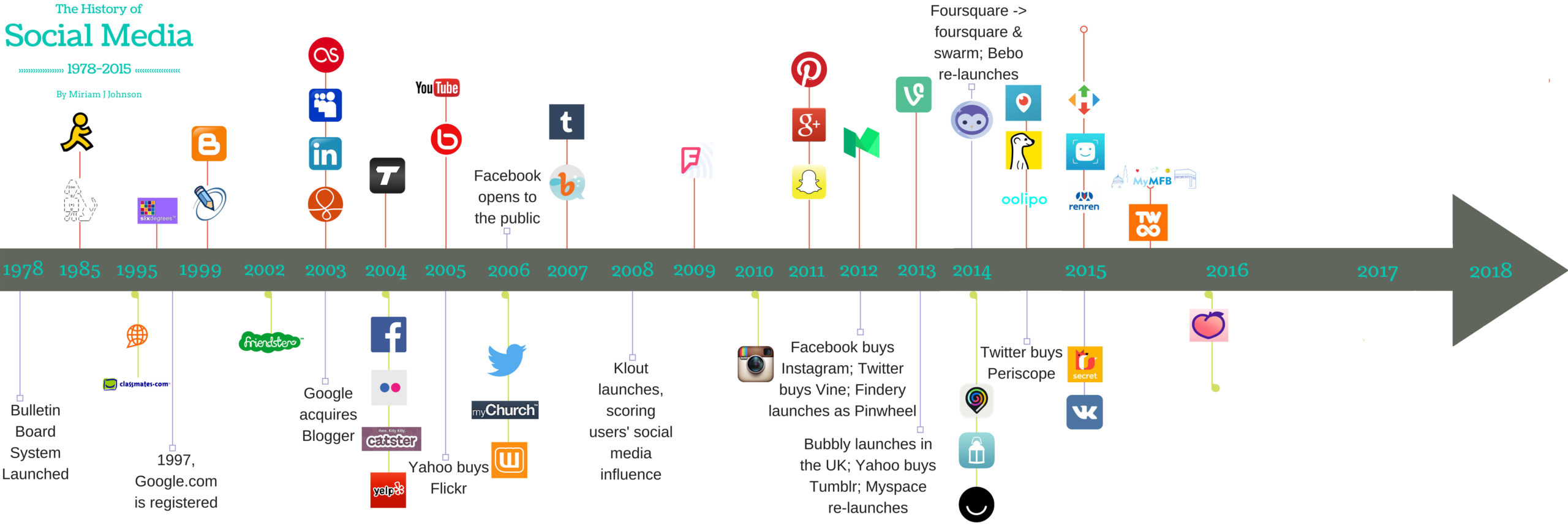
The above chart from Miriam J Johnson shows the timeline of social media from 1978 to 2015. As you can see, there has been quite a lot of innovation since 2003 with many of the platforms we know and love emerging between then and 2011. When most of the platforms we commonly use today came out, they were vastly different than one another. The differentiation gave users a reason to join the platform or download the app to see what the hype was about. Let’s take a look at the main selling feature(s) at their start for some of the most used platforms in 2017.
Facebook:
When Facebook was opened up from educational institutions only, to anyone with a registered email address, the main purpose was to connect users to their friends and families as more of a search directory service. If you wanted to see what someone was up to, you had to visit their profile. In fact, the Newsfeed wasn’t even introduced until 2006, when people subsequently lost their minds over the change. The site continued to be a way to stay connected with people by writing on their walls or by sharing updates of your own with photos and text posts. Throwback to the great “is” statuses that inspired us all to share our daily activities. I shouldn’t have even been allowed around a keyboard at 13.

Twitter:
Originally designed as an SMS mobile phone-based platform, Twitter users were able to communicate with one another through 140 character tweets. Since the platform was first designed for SMS use, there was no photo or media sharing like the mobile application offers today. Though labeled as a social network, Twitter is more defined by the ability to share thoughts and information with the world. The CMO, Leslie Berland, put it well earlier this year when she described Twitter by saying “Twitter shows me what’s happening in the world”. “Twitter shows me what’s up. Twitter keeps me on the pulse. Twitter keeps me informed. This is why people love Twitter.” As an example of platforms changing constantly, as I was writing this blog, Twitter announced that some accounts are going to be able to now tweet 280 characters.
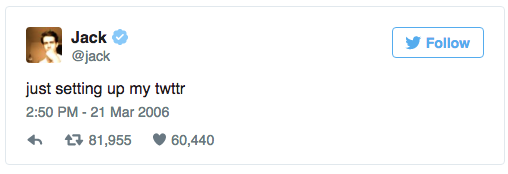
Instagram:
Launched in 2010, Instagram served a single purpose when it first hit the app store, and that was to share photos. The app became wildly popular with 1 million users just months after launch. The app was different than Facebook and Twitter by really letting users focus on using their creativity to share unique and crafty photos, without the bogging down of so many additional features. Instagram has since been acquired by social media giant Facebook in April of 2012, less than two years after it first hit the app store. I think we can all agree that the current app looks way better.

Snapchat:
What is considered to be one of the fastest-growing and most used platforms by younger generations today was once described in an initial press release as follows: “”Toss out those old, last-season photo messaging apps because now Picaboo (Snapchat’s original name) let’s you and your girlfriends send photos for peeks and not keeps!” proclaims the release. “Show off your sexy new hairstyle or let him choose that hot new outfit, without the hassle and stress of knowing that these images will be saved into your camera gallery forever.” Essentially Snapchat’s selling point was that you could send photos that you maybe wouldn’t want someone to have access to forever if you catch my drift.
YouTube:
YouTube was first created as a Flickr-style sharing site for videos in 2005 after its creators realized that a user-friendly video-sharing platform didn’t exist. The first video ever posted was of founder Jawed Karim standing in front of elephants at the zoo. As more users took interest in the site, Google also took interest and acquired the company in 2006 for 1.65 billion dollars.
A common theme among these five platforms at their start was the ability for users to share their thoughts or content. Although each platform focused on a different type of content like photos, text posts, or videos, they all allowed their users to share their own stuff and see the content other people posted as well. At the core they had a similar goal, to increase users, but were all very different in overall capabilities.
Great Platforms Think Alike
There have been a lot of social platforms and apps that have come and gone in the last decade (RIP Vine), but the five platforms mentioned above are still going strong. A lot has changed since their initial release, and although many of us probably don’t remember a time before Instagram allowed video or Twitter allowed you to directly reply to someone’s Twitter, that day did exist. 2017 brought many changes to many of the social media platforms we all use every day, but a lot of the changes looked the same.
Seeing Double
There are several main features that you can find on almost all of the five platforms above. As a business, it’s important to stay up to date on the latest updates as many as implemented to enhance user experience.
Messaging:
You can send messages on Facebook, a direct message (DM) on Twitter, chat with your friend on Snapchat and even send a funny meme you saw on Instagram right to your BFF. Messaging is no longer a differentiation, but platforms have been trying to improve the messaging experience, even going as far as automated bots for quick responses for many brand pages. If your business has several social profiles, it is important to have someone monitor the accounts for new messages.
“The average time it takes brands to respond to a social media message is 10 hours. Most consumers, however, expect a response in less than four” according to Business News Daily. Why is it important to respond? 30% of customers will switch to a competing brand if they don’t get a response to their social media message, while 43% say they are more likely to make a purchase if a brand makes a meaningful connection with them on social.
Video & Live Video:
Before 2013, you could only post photos on Instagram and before 2015 you could only tweet links to videos. Here we are in 2017 and video has taken over every social platform. What YouTube was once the lone king of, has now become a staple of how people consume content online. We often hear from our clients that they just don’t have the resources to put into making quality video, but video doesn’t necessarily have to be expensive, it just has to connect with your audience.
Videos on Twitter get 2.8x more retweets while people watch over an hour of Facebook video every week. If you need any more convincing on why you should be incorporating video into your marketing, check out this list of staggering online video stats. If you want to stand out against your competitors, play around with creating video content. Go live on Facebook or Instagram for an event or announcement, create a video about your company, or try incorporating videos into the content you post. Video is the future of the web, don’t get lost in the dust.
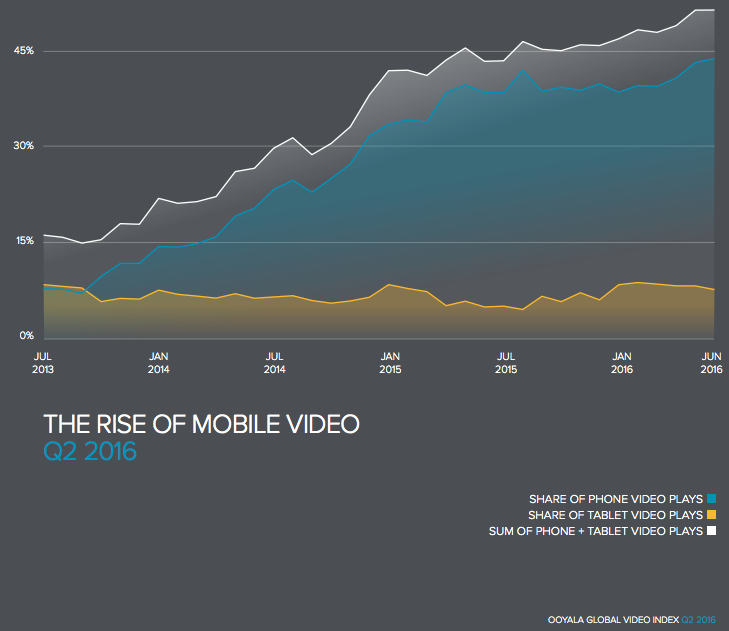
Social Commerce:
People no longer have to leave their house, their chair, or even their social media to make purchases. Another trend that has become a staple feature on most social networks in the ability to browse and buy products in the applications. Facebook has a mobile shopping section, and Twitter had a ‘buy now’ button option for advertisers featuring products in their ads (they phased it out this year to make room for more social commerce options), even Instagram has a shop now option on sponsored content.
Setting up a Facebook shop section isn’t for every brand, like those specializing in services. Even if you can sell your product directly on the platform, you can use paid promotions across the platforms to bring your consumers to a mobile-friendly section of your website. According to Heidi Cohen, social commerce is so successful because “Roughly three out of four consumers rely on social networks to guide their purchase decisions. As a result, it’s a no-brainer to sell where your customers are rather than trying to lure them to your site.”
Stories:
An honorary mention goes to stories which became one of the top things being added to social platforms in 2017. People took notice and had a good time making fun of all the things that would have stories in 2017. I still haven’t seen a ton of brands utilize the stories feature in Instagram and Snapchat, but there is definitely consumer attraction to viewing stories.

What’s Next
All that is certain is change. Social platforms will continue to evolve as long as there are consumers to use them. Businesses need to stay on top of the way the platforms evolve to truly remain innovative and keep in touch with their customers. Even though things have changed, it is still important to understand how to connect with consumers on each platform. Instagram is still very visual, Twitter is still short and sweet, and Facebook is still informative. So although the platforms are becoming feature clones of one another, keep your marketing fresh and tailored to the audience you really want to connect with.
Would you like to learn how you can make a difference on the top social platforms like Facebook and Twitter? Download our Social Media best practices document by filling out the form below.
